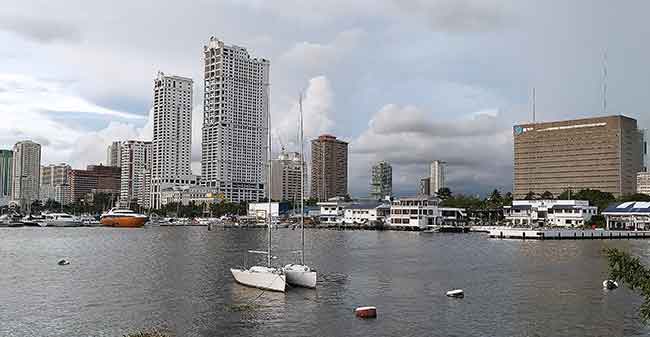
The International Monetary Fund (IMF) downgraded its 2020 Philippine economic growth forecast on the back of the expected slowdown in private investment and consumption due to the coronavirus disease 2019 (Covid-19) pandemic.
In its World Economic Outlook (WEO) report released on Tuesday, IMF said the country’s gross domestic product (GDP) is projected to contract by 8.3 percent this year, down from its -3.6 percent earlier forecast.
The IMF’s latest forecast is worse than the -6.9-percent and the -7.3-percent projections of the World Bank and the Asian Development Bank.
If correct, the revised figure would also surpass the government’s adjusted assumption of a 5.5-percent contraction.
“The downward revision of 2020 growth forecasts for the Philippines from -3.6 percent in the June WEO to -8.3 percent in the October WEO mostly reflects a larger-than-expected downturn in Q2 (second quarter) and a more gradual resolution of the pandemic as witnessed over the past months, with prolonged social distancing,” said IMF Resident Representative to the Philippines Yongzheng Yang in an emailed statement.
The Philippine economy plunged into a technical recession by contracting by more than 16 percent in the second quarter of the year.
“Despite a somewhat softer global contraction expected in the October WEO, weak public confidence and low remittances in the Philippines as a result of the pandemic are expected to continue weighing on private investment and consumption,” said Yang.
“The negative impacts of Covid19 are expected to be only partially offset by policy support,” he added.
The IMF, however, expects the Philippine economy to recover next year and grow by 7.4 percent, up from its earlier 6.8-percent forecast.
“This higher growth forecast is on account of — in addition to the 2020 base effect — an expected rebound in pent-up demand from the relaxation of quarantine measures and continued effects of the policy easing in 2020,” said Yang.
Yang, however, noted that the pandemic will cause hysteresis and bankruptcies.
“Nonetheless, significant scarring effects are expected and it will take a couple of years before real GDP to return to the pre-pandemic (2019) level,” he said.
“Over the medium term, the Covid19 crisis is expected to result in lower levels of potential output and higher structural unemployment, but real GDP growth is expected to converge back to potential, of 6.5 percent by 2025,” added Yang.
#realestateblogph | #realestateblogphpropertynews | #REBPH
Article and Photo originally posted by Manila Times last October 14, 2020 and written by Anna Leah E. Gonzales.







More Stories
Vista Land Celebrates 50 Years with Sandiwa: An Event Honoring Leadership, Legacy, and the Filipino Dream of Homeownership
Vista Land Celebrates Love Month in Ilocos Region
Vista Land Bridges Cebuano Heritage and Progress with Valencia by Vista Estates